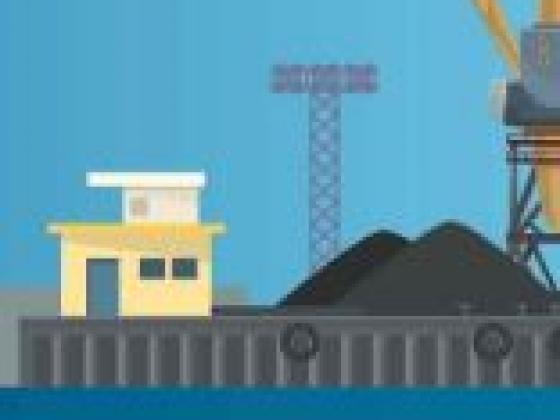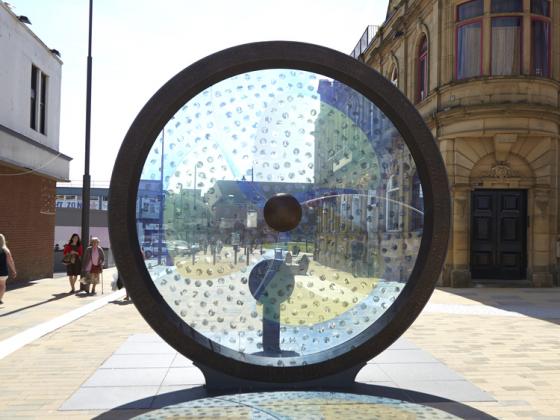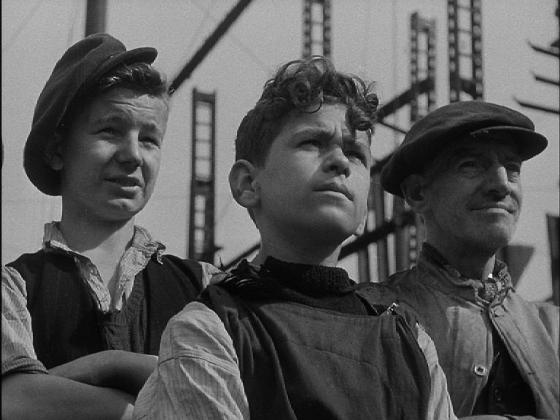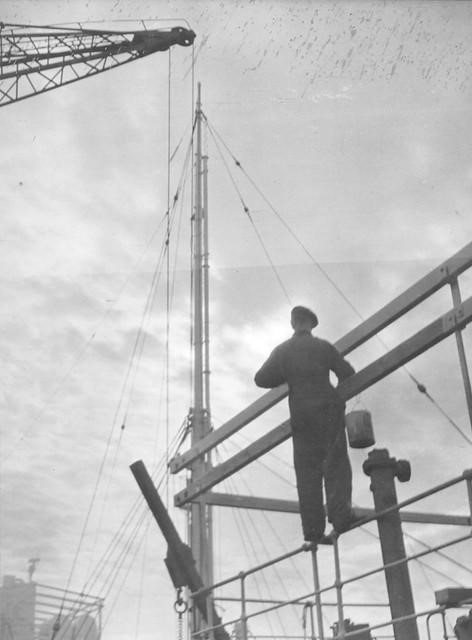Shipbuilding was a difficult and dangerous industry, with many risks.
The ‘boom and bust’ nature of the industry meant that in good times there was a lot of work, but there were regular periods where the world had enough ships (or enough tonnage) and no new ones are needed. In those times, there was no work. Keel Square in Sunderland has list of every ship built in the town. If you walk along it, you will see that in some years, there must have been very little employment for shipyard workers.
Beamish Resource Centre has a collection of oral history interviews of people who lived through the 1930s depression, and includes stories of the hardship experienced by shipyard workers.
Until the late 1960s, shipbuilding work was entirely casualised. Each ship launch was a time of anxiety, as workers wondered if they would be re-hired for a new vessel. The recruitment process was known as ‘the market’. Workers turned up on a morning, and the foreman (it was always a man) would choose who to hire. Men who were skilled and who were well known were most likely to have work through this system: unskilled labourers, outsiders or men labelled as ‘trouble’ for any reason risked being sent home again.
However, stress and uncertainty were not the only problems faced by shipyard workers. Modern health and safety conditions were not introduced until the 1970s, and even then, change came slowly. Simple conditions that would now be taken for granted, like hand washing facilities, were considered a luxury. Until the construction of modern ship factories, which were covered, workers were often outside, and exposed to rain or even snow. Workers on piecework rates could not afford to stop for toilet breaks, so work areas were dirty and smelly.
Accidents were a regular occurance, and almost every shipyard worker has a story to tell of a near miss, or a friend they watched die.
(Picture: A painter working on a super structure, taken from the Joseph L Thompson & Sons Ltd collection, courtesy of TWAM, Reference DS.JLT-5-3-4)
The industrial noise of welding and other manuel processes was a constant, and many workers experience industrial deafness. Others ended up with chronic complaints such as white finger - a problem caused by repetitive vibrations of some hand tools. Asbestosis has also been common among ex-shipyard workers, especially those employed on naval vessels during WW2 and up the Korean War.

Frederick Brady of Sunderland, Welder
(External link)
Fred Brady moved to Sunderland with his family as a young boy, and fell in love with the town. This interview is part of the Millenium Memory Bank. From about 38 minutes onward, Fred talks about shipyard solidarity; shipyard fatalities he witnessed; and (from 42 mins) being sent for a ‘long stand’ on his first day at Doxford’s as a young apprentice.

Keel Square art, Propellers of the City
(External link)
Artwork 'PROPELLERS OF THE CITY' and information about its historical significance are available on this site by Broadbent.studio. The propellor incorporates 500 photographs of shipyards and shipyard workers, while the Keel Line lists the names of the thousands of ships built in Sunderland. This tells another story: in some years, many ships were built. In other years, only one or two.

Tyneside Story
(External link)
Tyneside Story (1944) is a dramatisation of the re-opening of Tyneside shipyards at the start of the Second World War after being closed during the depression.
